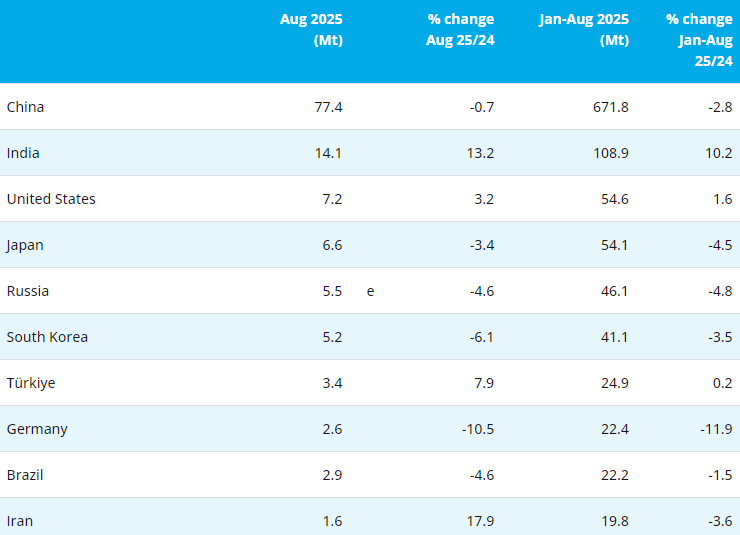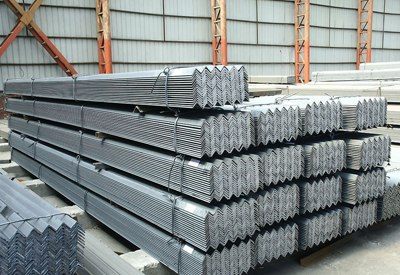[Ferro-Alloys.com] Jupiter Mines Limited (ASX. JMS) (Jupiter or the Company), and together with its subsidiaries, the Group, is pleased to provide the following activities report for the quarter ended 31 December 2024. Jupiter has a 49.9% beneficial interest in Tshipi é Ntle Manganese Mining Proprietary Limited (Tshipi), which operates the Tshipi Manganese Mine in the Kalahari manganese field. All Tshipi information is reported on a 100% basis (not based on Jupiter’s 49.9% economic interest).
Tshipi Manganese Mine--Key production, sales and financial information for Tshipi for the quarter ended 31 December 2024, and comparatives, are presented below:
|
Key Statistic |
Unit |
Q2 FY2025 |
Q1 FY2025 |
YTD FY2025 |
Q2 FY2024 |
|
Production |
Tonnes |
745,167 |
1,211,890 |
1,957,057 |
1,015,633 |
|
Total sales |
Tonnes |
683,090 |
1,038,352 |
1,721,442 |
764,162 |
|
Average CIF price achieved (HGL) for sales concluded on a CIF basis 1 |
US$/dmtu |
3.72 |
4.28 |
4.06 |
3.47 |
|
Average FOB price achieved (HGL) for sales concluded on a FOB basis 1 |
US$/dmtu |
3.02 |
3.01 |
3.02 |
2.89 |
|
Average FOB cost of production |
US$/dmtu |
2.43 |
2.33 |
2.36 |
2.00 |
|
Earnings before interest, tax & depreciation (EBITDA) |
A$ million |
26.9 |
21.0 |
47.9 |
13.0 |
|
Net profit after tax (NPAT) |
A$ million |
17.2 |
13.7 |
30.9 |
10.2 |
|
Cash at bank |
A$ million |
141.4 |
96.8 |
141.4 |
92.6 |
1. Tshipi sells most of its ore on a CIF basis. See “Logistics and Sales” below for a full breakdown.
MINING AND PRODUCTION
Mining of graded ore increased 4% and waste decreased by 6% from the previous quarter. The focus of mining activities remained to deplete the existing cut and expose ore in the next cut before expected heavy rains, which commenced in December. Tshipi high grade production decreased by 22%. No low grade ore was produced during the quarter, due to less than favourable market conditions. This impacted overall production volumes, down 39% from previous quarter. Cost of production increased 5% to US$2.43 on an FOB basis for the quarter. The main reason for this increase (77% of the variance) was royalties applicable for the quarter. The remainder of the variance was due to lower produced volumes (resulting in an increased per unit cost contribution from fixed overheads).
LOGISTICS AND SALES
Logistics volumes decreased by 28% for the quarter, with Tshipi reducing road volumes in line with planned sales and the lower manganese prices prevailing during the quarter. Sales volumes decreased in the quarter by 34%, stabilising after Q1 peaks. Year to date sales remain on track to reach 3.4 million tonnes exported for FY2025 (in line with Tshipi’s historical average).
Invitation forThe 21st China Ferro-Alloys International Conference
Marketing and Marketing Outlook JUPITER MARKETING
Sales and financial information for Jupiter’s marketing entity for the quarter ended 31 December 2024, as well as comparatives, are presented below.
|
|
Unit |
Q2 FY2025 |
Q1 FY2025 |
YTD FY2025 |
Q2 FY2024 |
|
Sales |
Tonnes |
359,715 |
535,018 |
894,733 |
249,809 |
|
Average CIF price achieved (HGL) for sales concluded on a CIF basis |
US$/dmtu |
3.72 |
4.34 |
4.07 |
3.65 |
|
Average FOB price achieved (HGL) for sales concluded on a FOB basis |
US$/dmtu |
3.04 |
3.04 |
3.04 |
2.84 |
|
Marketing fee income |
A$ million |
1.9 |
2.5 |
4.4 |
1.1 |
|
EBITDA |
A$ million |
1.7 |
2.3 |
4.0 |
0.9 |
|
NPAT |
A$ million |
1.5 |
1.6 |
3.1 |
0.6 |
|
Cash at bank |
A$ million |
3.7 |
2.2 |
3.7 |
7.0 |
The prices shown below relate to the prices realised by Jupiter’s marketing team for the 49.9% share of Tshipi sales that are marketed by Jupiter.
MARKET COMMENTARY AND OUTLOOK
The semi carbonate seaborne manganese ore price reflected a modestly increasing trend through the quarter with the CIF Tianjin denominated price, as reported by Fastmarkets, increasing by 6% as at 27 December 2024 compared to 27 September 2024. The Fastmarkets manganese ore semi carbonate index (36.5% Mn CIF Tianjin) price was US$3.96/dmtu on 27 December 2024 and the corresponding FOB Port Elizabeth price was US$3.30/dmtu.
The Fastmarkets high grade ore index witnessed a significant decrease at the beginning of the quarter, as export volumes from Gabonese producers were elevated and exceeded demand before similarly starting to stabilise and subsequently correct towards the latter part of the quarter.
The increase in semi carbonate and high grade ore seaborne prices through the quarter was driven by the supply side responses to the prevailing weak market conditions, with South African producers reducing shipment volumes from the beginning of the quarter. Seaborne shipments for high grade ore are expected to have decreased in January 2025, which lent support to prices in December 2024, reflecting the timing of when seaborne cargo is offered to the market.
Freight rates similarly showed a declining trend during the quarter, positively impacting FOB prices, as demand for vessels was impacted by fewer shipments.
Portside manganese ore prices at major manganese ports in China were further supported towards the end of the quarter by restocking activities prior to the Spring Festival holiday in early 2025.
The above factors contributed to portside material at main ports in China decreasing by circa 0.8 million tonnes between the start and end of the quarter. It reported portside manganese ore at major ports in China at 5.2 million tonnes on 27 December 2024, down by 14% from 27 September 2024.
The average revenue realised for Q2 FY2025 (by Tshipi, and Jupiter’s marketing team) is lower than Q1. This is because revenue is recognised in the month of shipment, while material is typically sold on a spot price basis in the month prior to shipment. July 2024 shipments were sold when manganese ore prices were high, even considering the downward correction between June and July 2024. The positive movement in prices at the end of the quarter did not yet translate into shipments by quarter end. Manganese ore prices, as reported by various indices, were also lower in Q2 FY2025 compared to Q1, even without considering this timing difference.
Downstream, the steel sector has continued to face headwinds due to poor demand. While crude steel production figures increased on a quarterly basis, margins for major steel products were still under pressure globally.
Geopolitical activities, including trade tensions, continue to impact the global economic environment and may threaten the Chinese steel sector directly should tariffs be implemented by the United States of America. In 2024 amid dwindling domestic demand, China reportedly managed to export 110.72 million tonnes, which was the highest level since 2015.
Even though the Chinese government did implement some fiscal and monetary support measures in the quarter which may have assisted the broader Chinese economy, these did not materially support steel intensive industries during the quarter, but rather led to sentiment driven temporary changes.
In the short term, the manganese ore market is expected to be mainly impacted by supply side factors. The continued reduced manganese ore supply from major manganese ore producing countries has further reduced manganese ore port stocks in China by circa 1.0 million tonnes post quarter end with stocks now reportedly at a 5-year low. The manganese ore price is expected to be further closely correlated with supply in the short term, in the absence of significant changes in demand on a global basis.
|
Key market prices |
Unit |
Today (end Jan 2025) |
% change since 31 Dec 2024 |
31 Dec 2024 |
30 Sep 2024 |
30 Jun 2024 |
31 Mar 2024 |
31 Dec 2023 |
|
Mn ore 37% FOB Port Elizabeth |
US$/dmtu |
3.65 |
11% |
3.30 |
3.00 |
4.82 |
3.04 |
2.71 |
|
Freight rate Port Elizabeth to Tianjin (estimate) |
US$/dmtu |
21.50 |
(10%) |
24.00 |
26.80 |
30.60 |
33.30 |
30.06 |
|
Total stock at Chinese ports |
‘000 tonnes |
4,028 |
(22%) |
5,179 |
5,973 |
5,071 |
5,781 |
5,483 |
Source: Jupiter report
- [Editor:tianyawei]



 Save
Save Print
Print Daily News
Daily News Research
Research Magazine
Magazine Company Database
Company Database Customized Database
Customized Database Conferences
Conferences Advertisement
Advertisement Trade
Trade













 Online inquiry
Online inquiry Contact
Contact

Tell Us What You Think